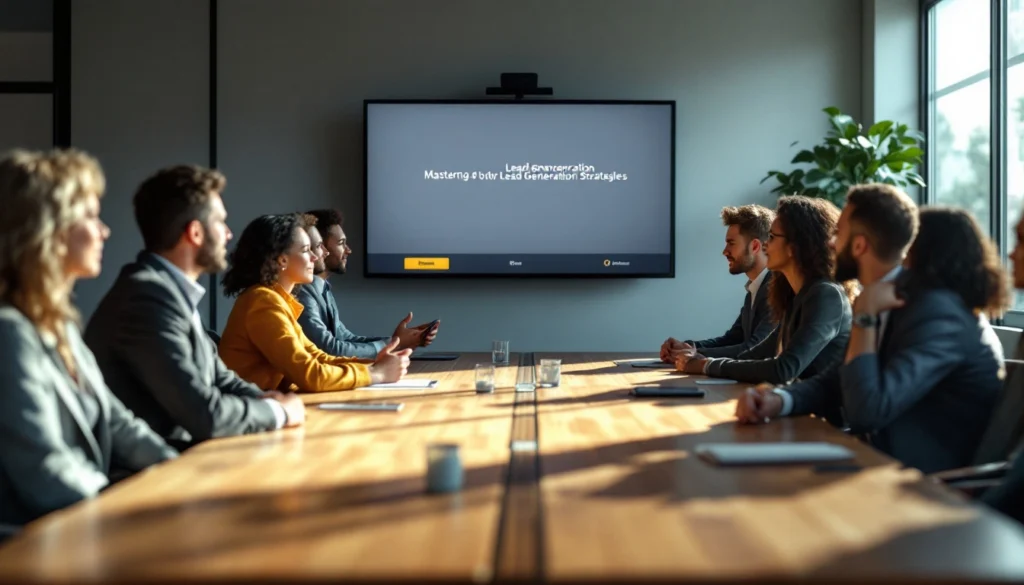In today’s competitive business landscape, lead generation has become the lifeblood of growth-oriented companies. Among the various strategies available, event marketing – both virtual and in-person – has emerged as a powerhouse for attracting and nurturing potential customers. This comprehensive guide will explore how to effectively use webinars and events to generate high-quality leads, ultimately driving conversions and business growth.
The Power of Event Marketing
Recent studies highlight the significance of events in modern marketing strategies. According to Bizzabo, 85% of business leaders believe in-person events are essential to their company’s success. Meanwhile, the rise of virtual events has opened new doors, with 93% of event marketers planning to invest in virtual events moving forward. These statistics underscore the importance of mastering both virtual and in-person event strategies for lead generation.
Strategic Planning: The Foundation of Successful Events
Before diving into event execution, it’s crucial to establish a solid foundation through strategic planning. This process involves several key steps:
- Define clear objectives aligned with overall marketing goals
- Identify your target audience and create detailed buyer personas
- Choose the appropriate format (live, on-demand, hybrid for webinars; virtual, in-person, hybrid for events)
- Select compelling topics that address audience pain points
- Design an engaging agenda with interactive elements
- Choose expert speakers who resonate with the audience
- Set up effective lead capture mechanisms
When setting objectives, ask yourself: How many leads do you aim to generate? What quality of leads are you targeting? What actions do you want attendees to take post-event? These goals will guide your decisions on event format, content, and promotional strategies.
Pre-Event Engagement and Promotion
The success of your event largely depends on your pre-event engagement and promotion efforts. Here are key strategies to implement:
- Craft compelling event messaging and attention-grabbing titles
- Optimize landing pages and registration forms
- Leverage email marketing with segmented lists and personalized content
- Utilize social media platforms for organic and paid promotion
- Implement paid advertising strategies on relevant platforms
- Explore partnerships and co-marketing opportunities
- Create pre-event engagement content (blog posts, videos, quizzes)
Remember, your promotion should clearly communicate the value proposition of your event to potential attendees. Create compelling landing pages that highlight the benefits of participation and make the registration process as smooth as possible.
Maximizing Live Event Engagement
Whether you’re hosting a webinar or an in-person event, engagement is critical for successful lead generation. Here are strategies to maximize engagement during your event:
- Create immersive, interactive experiences
- Deliver high-quality, valuable content with actionable insights
- Use effective presentation techniques and visual aids
- Facilitate networking opportunities (breakout rooms, virtual lounges for online events; designated areas for in-person events)
- Leverage live engagement tools (polls, Q&A, chat functions)
- Address technical challenges promptly
- Implement lead capture and qualification mechanisms during the event
For webinars, choose a reliable platform that offers the features you need. Incorporate interactive elements throughout to maintain engagement and gather valuable insights from participants. For in-person events, plan activities that encourage interaction, such as workshops, panel discussions, or product demonstrations.
Post-Event Follow-up and Nurturing
The real work begins after your event concludes. A well-planned post-event communication strategy is essential for nurturing the leads you’ve generated. Here’s how to approach this crucial phase:
- Send personalized thank-you emails with event highlights
- Share recordings and additional resources
- Segment leads based on engagement and interest levels
- Implement targeted nurturing campaigns
- Conduct post-event surveys for feedback and further qualification
- Analyze event data to improve future lead generation efforts
Implement a lead scoring system to prioritize your follow-up efforts. Consider factors like engagement level during the event, job title, and expressed interest in your products or services. This will help you focus your resources on the most promising leads.
Measuring Success and Continuous Improvement
To truly master event-based lead generation, you must measure and analyze your performance. Start by defining key performance indicators (KPIs) that align with your initial objectives. These might include:
- Number of registrations and attendees
- Engagement metrics (e.g., questions asked, poll participation)
- Lead quality score
- Conversion rates at various stages of the funnel
- Customer acquisition cost
Calculate the ROI of your events by comparing the total cost (including time and resources) against the value of leads generated and eventual sales. Remember to factor in the long-term benefits, such as increased brand awareness and customer loyalty.
Use these insights to continuously improve your event strategy. Identify what worked well and what didn’t, and make data-driven decisions for future events.
Conclusion: Unleashing the Full Potential of Event-Based Lead Generation
Mastering virtual and in-person events for lead generation is an ongoing journey. By applying these strategies and continuously refining your approach, you’ll be well on your way to creating a powerful engine for business growth.
Remember, the key lies in understanding your audience, delivering value, and nurturing relationships beyond the event itself. Whether you’re hosting a webinar or a grand conference, keep your focus on creating meaningful connections that drive long-term success.
Are you ready to unlock the full potential of event-based lead generation? Start planning your next event with these insights in mind, and watch your pipeline flourish!





